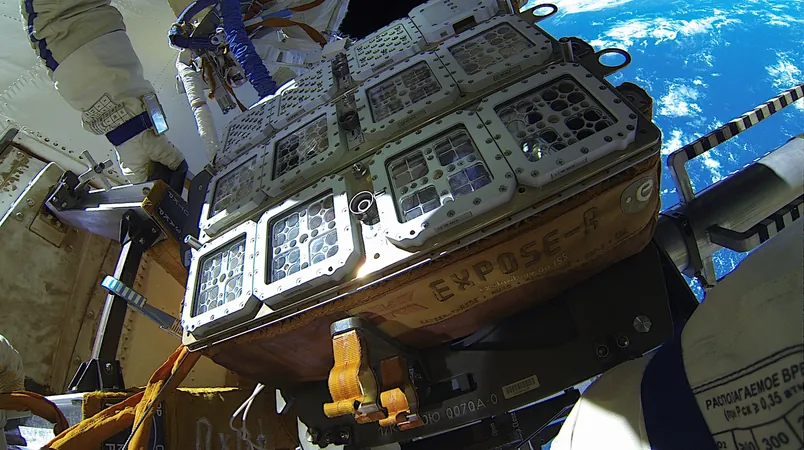
Revolutionary Breakthrough: Antibodies Show Resilience to Space Conditions!
2025-04-04
Author: Li
Introduction
Antibodies, known for their incredible ability to detect target molecules with high affinity and specificity, are now being developed into cutting-edge analytical instruments aimed at identifying signs of life on other planets. These molecular recognition agents have remarkable sensitivity, capable of detecting substances at sub-nanomolar concentrations.
The EXPOSE-R2 Mission
Recent studies have emphasized the need to explore how these antibodies perform in the extreme conditions of space to convince space agencies of their effectiveness for planetary exploration. This research culminated in a pivotal experiment called the EXPOSE-R2 mission, which took place outside the International Space Station (ISS).
During the mission, which lasted 588 days, the antibodies were subjected to ionizing radiation levels amounting to approximately 220 mGy—an exposure comparable to what would be experienced on a mission to Mars. Additionally, these samples were also tested under harsh thermal cycles, pressure variations from launch, and prolonged storage in space, simulating the multifaceted challenges they would face during interplanetary exploration.
Findings
In this groundbreaking study, researchers employed a model biochip containing freeze-dried antibodies, tested in two formats: either free-floating or covalently bonded to a solid surface. Remarkably, the findings revealed that over 40% of the exposed antibodies maintained their functionality despite the challenges of cosmic radiation. This resilience suggests that the antibodies are well-equipped for in situ analyses on planetary bodies.
The EXPOSE Project and Its Broader Implications
Moreover, the EXPOSE-R2 project went beyond antibody research. It housed a plethora of life forms, including 46 species of bacteria, fungi, and arthropods that spent an extended 18 months exposed to the rigors of space. During this period, their samples were subjected to a vacuum that extracted moisture, oxygen, and other gases essential for life. The temperature fluctuations experienced outside the ISS ranged from a chilling -12°C during the shadowed periods to a scorching 40°C during direct sunlight.
The broader objective of the EXPOSE experiments is to push the boundaries of known terrestrial life, questioning whether these organisms can endure the hostile conditions of space and how intense solar radiation affects not just the living creatures but also the chemicals accompanying them.
Conclusion
As the realm of astrobiology expands, the implications of these findings could redefine our approach to the search for extraterrestrial life, paving the way for new technologies and exploration strategies that harness the surprisingly resilient properties of antibodies. The future of space exploration looks promising, and as we continue to unravel the mysteries of life beyond Earth, groundbreaking developments are within our reach!
Stay tuned for more thrilling updates on this topic and other advances in astrobiology that could change our understanding of life in the universe!



 Brasil (PT)
Brasil (PT)
 Canada (EN)
Canada (EN)
 Chile (ES)
Chile (ES)
 Česko (CS)
Česko (CS)
 대한민국 (KO)
대한민국 (KO)
 España (ES)
España (ES)
 France (FR)
France (FR)
 Hong Kong (EN)
Hong Kong (EN)
 Italia (IT)
Italia (IT)
 日本 (JA)
日本 (JA)
 Magyarország (HU)
Magyarország (HU)
 Norge (NO)
Norge (NO)
 Polska (PL)
Polska (PL)
 Schweiz (DE)
Schweiz (DE)
 Singapore (EN)
Singapore (EN)
 Sverige (SV)
Sverige (SV)
 Suomi (FI)
Suomi (FI)
 Türkiye (TR)
Türkiye (TR)
 الإمارات العربية المتحدة (AR)
الإمارات العربية المتحدة (AR)